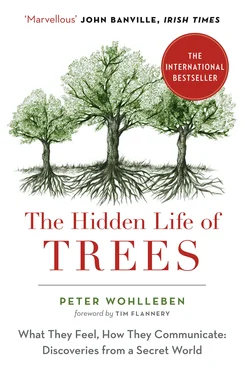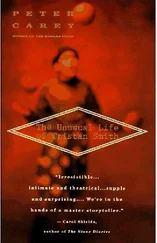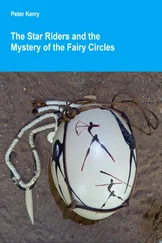But why are trees such social beings? Why do they share food with their own species and sometimes even go so far as to nourish their competitors? The reasons are the same as for human communities: there are advantages to working together. A tree is not a forest. On its own, a tree cannot establish a consistent local climate. It is at the mercy of wind and weather. But together, many trees create an ecosystem that moderates extremes of heat and cold, stores a great deal of water, and generates a great deal of humidity. And in this protected environment, trees can live to be very old. To get to this point, the community must remain intact no matter what. If every tree were looking out only for itself, then quite a few of them would never reach old age. Regular fatalities would result in many large gaps in the tree canopy, which would make it easier for storms to get inside the forest and uproot more trees. The heat of summer would reach the forest floor and dry it out. Every tree would suffer.
Every tree, therefore, is valuable to the community and worth keeping around for as long as possible. And that is why even sick individuals are supported and nourished until they recover. Next time, perhaps it will be the other way round, and the supporting tree might be the one in need of assistance. When thick silver-gray beeches behave like this, they remind me of a herd of elephants. Like the herd, they, too, look after their own, and they help their sick and weak back up onto their feet. They are even reluctant to abandon their dead.
Every tree is a member of this community, but there are different levels of membership. For example, most stumps rot away into humus and disappear within a couple of hundred years (which is not very long for a tree). Only a few individuals are kept alive over the centuries, like the mossy “stones” I’ve just described. What’s the difference? Do tree societies have second-class citizens just like human societies? It seems they do, though the idea of “class” doesn’t quite fit. It is rather the degree of connection—or maybe even affection—that decides how helpful a tree’s colleagues will be.
You can check this out for yourself simply by looking up into the forest canopy. The average tree grows its branches out until it encounters the branch tips of a neighboring tree of the same height. It doesn’t grow any wider because the air and better light in this space are already taken. However, it heavily reinforces the branches it has extended, so you get the impression that there’s quite a shoving match going on up there. But a pair of true friends is careful right from the outset not to grow overly thick branches in each other’s direction. The trees don’t want to take anything away from each other, and so they develop sturdy branches only at the outer edges of their crowns, that is to say, only in the direction of “non-friends.” Such partners are often so tightly connected at the roots that sometimes they even die together.
As a rule, friendships that extend to looking after stumps can only be established in undisturbed forests. It could well be that all trees do this and not just beeches. I myself have observed oak, fir, spruce, and Douglas fir stumps that were still alive long after the trees had been cut down. Planted forests, which is what most of the coniferous forests in Central Europe are, behave more like the street kids I describe in chapter 27 Конец ознакомительного фрагмента. Текст предоставлен ООО «ЛитРес». Прочитайте эту книгу целиком, купив полную легальную версию на ЛитРес. Безопасно оплатить книгу можно банковской картой Visa, MasterCard, Maestro, со счета мобильного телефона, с платежного терминала, в салоне МТС или Связной, через PayPal, WebMoney, Яндекс.Деньги, QIWI Кошелек, бонусными картами или другим удобным Вам способом.
. Because their roots are irreparably damaged when they are planted, they seem almost incapable of networking with one another. As a rule, trees in planted forests like these behave like loners and suffer from their isolation. Most of them never have the opportunity to grow old anyway. Depending on the species, these trees are considered ready to harvest when they are only about a hundred years old.
2 2 / The Language of Trees 3 / Social Security 4 / Love 5 / The Tree Lottery 6 / Slowly Does It 7 / Forest Etiquette 8 / Tree School 9 / United We Stand, Divided We Fall 10 / The Mysteries of Moving Water 11 / Trees Aging Gracefully 12 / Mighty Oak or Mighty Wimp? 13 / Specialists 14 / Tree or Not Tree? 15 / In the Realm of Darkness 16 / Carbon Dioxide Vacuums 17 / Woody Climate Control 18 / The Forest as Water Pump 19 / Yours or Mine? 20 / Community Housing Projects 21 / Mother Ships of Biodiversity 22 / Hibernation 23 / A Sense of Time 24 / A Question of Character 25 / The Sick Tree 26 / Let There Be Light 27 / Street Kids 28 / Burnout 29 / Destination North! 30 / Tough Customers 31 / Turbulent Times 32 / Immigrants 33 / Healthy Forest Air 34 / Why Is the Forest Green? 35 / Set Free 36 / More Than Just a Commodity Note from a Forest Scientist by Dr. Suzanne Simard Notes Index Acknowledgments About the Publisher
— THE LANGUAGE OF TREES — 2 / The Language of Trees 3 / Social Security 4 / Love 5 / The Tree Lottery 6 / Slowly Does It 7 / Forest Etiquette 8 / Tree School 9 / United We Stand, Divided We Fall 10 / The Mysteries of Moving Water 11 / Trees Aging Gracefully 12 / Mighty Oak or Mighty Wimp? 13 / Specialists 14 / Tree or Not Tree? 15 / In the Realm of Darkness 16 / Carbon Dioxide Vacuums 17 / Woody Climate Control 18 / The Forest as Water Pump 19 / Yours or Mine? 20 / Community Housing Projects 21 / Mother Ships of Biodiversity 22 / Hibernation 23 / A Sense of Time 24 / A Question of Character 25 / The Sick Tree 26 / Let There Be Light 27 / Street Kids 28 / Burnout 29 / Destination North! 30 / Tough Customers 31 / Turbulent Times 32 / Immigrants 33 / Healthy Forest Air 34 / Why Is the Forest Green? 35 / Set Free 36 / More Than Just a Commodity Note from a Forest Scientist by Dr. Suzanne Simard Notes Index Acknowledgments About the Publisher
ACCORDING TO THE dictionary definition, language is what people use when we talk to each other. Looked at this way, we are the only beings who can use language, because the concept is limited to our species. But wouldn’t it be interesting to know whether trees can also talk to each other? But how? They definitely don’t produce sounds, so there’s nothing we can hear. Branches creak as they rub against one another and leaves rustle, but these sounds are caused by the wind and the tree has no control over them. Trees, it turns out, have a completely different way of communicating: they use scent.
Scent as a means of communication? The concept is not totally unfamiliar to us. Why else would we use deodorants and perfumes? And even when we’re not using these products, our own smell says something to other people, both consciously and subconsciously. There are some people who seem to have no smell at all; we are strongly attracted to others because of their aroma. Scientists believe pheromones in sweat are a decisive factor when we choose our partners—in other words, those with whom we wish to procreate. So it seems fair to say that we possess a secret language of scent, and trees have demonstrated that they do as well.
For example, four decades ago, scientists noticed something on the African savannah. The giraffes there were feeding on umbrella thorn acacias, and the trees didn’t like this one bit. It took the acacias mere minutes to start pumping toxic substances into their leaves to rid themselves of the large herbivores. The giraffes got the message and moved on to other trees in the vicinity. But did they move on to trees close by? No, for the time being, they walked right by a few trees and resumed their meal only when they had moved about 100 yards away.
Читать дальше












